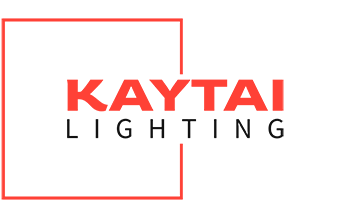Comment utiliser les profilés LED en aluminium étape par étape ?
Introduction
LED aluminum profiles are increasingly popular in both residential and commercial lighting. They protect LED strips, improve heat dissipation, and deliver enhanced light output. In this guide, we’ll walk through each step—selection, preparation, installation, and testing—to help you achieve a professional-grade lighting solution.
Learn how to install LED aluminum profiles with our step-by-step guide, from selecting the right profile to securing and wiring the LED strip lights.
About Kaytai
At Kaytai, we specialize in providing high-quality LED aluminum profiles and related lighting solutions. Our mission is to deliver reliable, efficient, and aesthetically pleasing products that meet the diverse needs of our customers. With years of expertise and a commitment to innovation, we stand as a trusted partner in the LED lighting industry. You can learn more about our offerings at www.kaytai.com.
Required Materials and Tools
Materials Needed:
- LED aluminum profiles
- Compatible LED strip lights (12V or 24V)
- Mounting clips or brackets
- End caps and diffusers
- Power supply, connectors, and controller
Tools Needed:
- Measuring tape and marker
- A fine-toothed saw or specialized aluminum cutter
- Sandpaper or a deburring tool
- Screwdriver
- Electrical tape or heat shrink tubing
Quick Reference: Suggested Materials for Different Applications
| Application | Profile Length | Strip Power |
|---|---|---|
| Under-cabinet lighting | 0.5–1 meter | 4–6 W/m |
| Ceiling decoration | 1–2 meters | 8–10 W/m |
| Wall accent lighting | 2–3 meters | 10–15 W/m |
※ Having all materials and tools ready ensures a smooth and efficient installation.
Preparing the LED Aluminum Profile
Start by cleaning the profile with a soft cloth to remove dust or debris. Measure the installation area carefully and mark the profile for cutting. Using a fine-toothed saw, cut the profile to the desired length. Smooth any rough edges with sandpaper or a deburring tool to ensure a clean fit.
Comparison of Cutting Tools
| Tool | Advantages | Disadvantages |
|---|---|---|
| Hand saw | Affordable, easy to control | Slower cutting process |
| Fine-toothed saw | Clean, precise cuts | Requires steady hands |
| Electric cutter | Fast and efficient | Higher initial cost |
※ Properly preparing the profile ensures a professional fit and finish.
Installing the LED Strip into the Profile
- Selecting the Right Strip:
Choose an LED strip that matches the profile’s width and power requirements. - Adhering the Strip:
Peel off the backing from the adhesive side of the LED strip. Carefully align it within the profile’s channel and press down firmly along the entire length. For extra security, consider applying transparent silicone or mounting clips. - Adding the Diffuser:
Attach the diffuser to the profile, snapping it into place. The diffuser softens the light output, protects the LEDs, and helps achieve a polished, professional appearance.
Common Diffuser Types
| Diffuser Type | Effect | Recommended Use |
|---|---|---|
| Clear | Maximum brightness, dots visible | Display cases |
| Frosted | Soft light, fewer visible dots | Home and office ambient lighting |
| Opaque | Uniform light, no visible dots | Decorative or retail lighting |
※ Proper installation ensures consistent light output and long-lasting performance.
Securing the LED Aluminum Profile
Choose a mounting method that suits your surface and installation conditions:
- Clips and Brackets: Offer a secure hold and easy removal.
- Screws: Provide maximum stability for permanent installations.
- Adhesive: Useful for smooth surfaces where drilling is not an option.
Mounting Methods Compared
| Mounting Method | Advantages | Disadvantages |
|---|---|---|
| Clips | Easy to install and remove | May require frequent checks |
| Screws | Very stable, long-lasting | Requires drilling, more time |
| Adhesive | Quick installation, no drilling | May weaken over time |
※ A stable installation method ensures the longevity of the profile and reduces maintenance.
Wiring and Testing the LED Strip
- Connecting the Power Supply:
Attach the LED strip’s positive and negative leads to the corresponding terminals on the power supply. If using a controller, connect it before attaching the power supply. - Checking Polarity:
Double-check that the positive and negative wires are connected correctly. Improper connections can cause the strip to malfunction. - Testing:
Power on the strip to verify even light output. Adjust settings on the controller as needed. Testing at this stage helps identify any wiring issues before finalizing the installation.
Troubleshooting Wiring Issues
| Problem | Possible Cause | Solution |
|---|---|---|
| LEDs not lighting | Incorrect polarity | Double-check wiring connections |
| Flickering lights | Loose connections or low-quality power supply | Secure connections, upgrade power supply |
| Uneven brightness | Voltage drop over long runs | Add additional power injection points |
※ Testing ensures everything works perfectly before completing the installation.
People Also Ask
- What’s the best diffuser for a uniform light appearance?
Frosted or opaque diffusers are ideal for creating smooth, even light with no visible LED dots. - Can LED aluminum profiles be used outdoors?
Yes, with weatherproof profiles and waterproof LED strips, outdoor installations are possible. - What are the advantages of using LED aluminum profiles?
They protect the LED strips, improve heat dissipation, enhance lighting quality, and offer a clean, professional finish. - What tools are needed to cut aluminum profiles?
A fine-toothed miter saw or specialized aluminum cutter is recommended for clean, precise cuts. - How can I ensure consistent brightness along a long profile?
Prevent voltage drops by adding power injection points and using a high-quality power supply.
Conclusion
By following this step-by-step guide, you can achieve a professional-looking LED lighting installation. Proper preparation, careful placement, and thorough testing ensure a polished final result that will last for years. If you’re looking for high-quality LED aluminum profiles, be sure to check out our selection at Kaytai.



